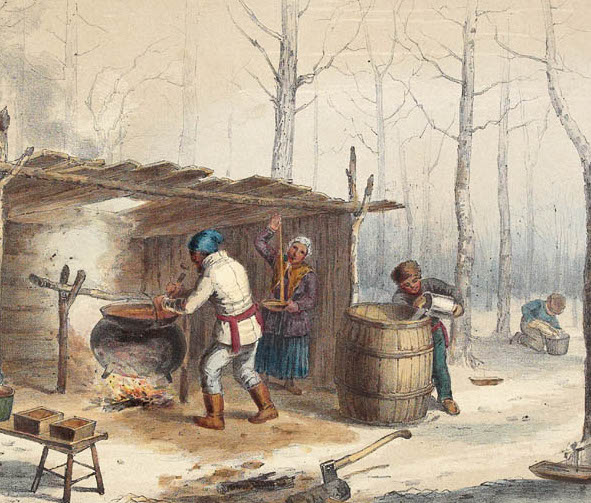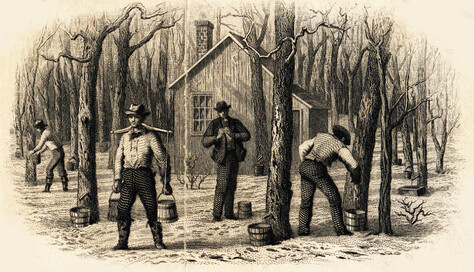Maple syrup has a rich history rooted in North America, particularly among Indigenous peoples.
1. Indigenous Origins
The production of maple syrup dates back hundreds of years, originating with Indigenous peoples in northeastern North America. They discovered that the sap of certain maple trees could be processed into a sweetener by boiling it down in hollowed-out logs or clay pots.
2. Early European Contact
When European settlers arrived in North America, they learned about maple syrup production from the Indigenous peoples. The process was refined over time, with the use of metal pots and pans replacing traditional methods.
3. Colonial Era
By the 17th century, maple syrup had become an important part of the diet of settlers and Indigenous communities alike. It provided a readily available sweetener in a time when sugar was expensive and difficult to obtain.
4. Commercialization
In the 19th century, advancements in technology such as the tin can for storage and transport helped maple syrup production become more widespread. Farmers began to tap larger numbers of trees and produce syrup for sale beyond their local communities.

5. Modern Production
Today, Canada (especially Quebec) and the northeastern United States are known for their maple syrup production. The process involves tapping maple trees during late winter or early spring when temperatures fluctuate between freezing at night and above freezing during the day. This temperature fluctuation causes sap to flow up from the roots, which is then collected and boiled down to produce maple syrup.
6. Cultural Significance
Maple syrup holds cultural significance for many Indigenous communities as well as in Canadian and American culinary traditions. It is used as a topping for pancakes, waffles, and other foods, and is also incorporated into various recipes.
7. Grading and Standards
Maple syrup is graded based on color and flavor, ranging from Grade A (light, medium, and dark amber) to Grade B (very dark). Each grade has its own unique flavor profile and viscosity.
Overall, maple syrup has evolved from a Native American tradition to a globally recognized sweetener and culinary delicacy, symbolizing the rich natural resources and cultural heritage of North America.

